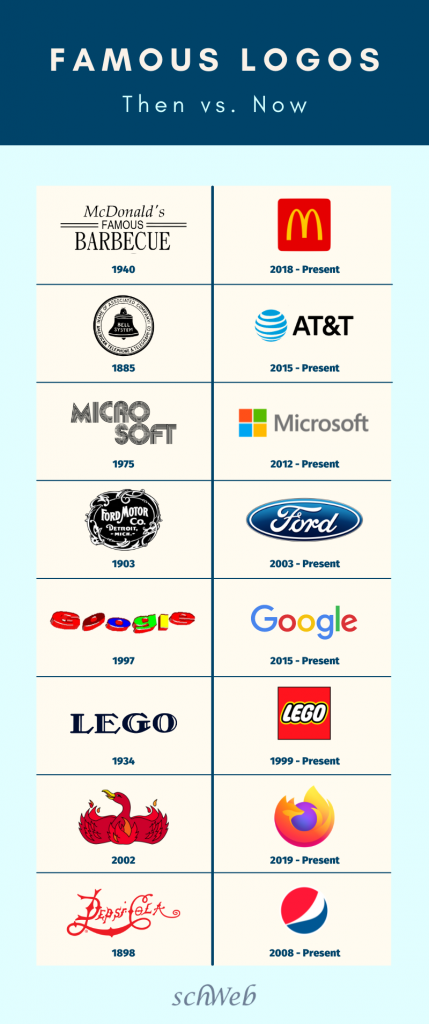From the billboards you see on your drive to work to the websites you use, graphic design is a bigger part of our lives than many people realize. It’s been around for so long that it’s difficult to imagine a world without it. The history of graphic design spans over centuries, but let’s take a closer look at how the field has evolved over time and shaped our lives.
What is Graphic Design?
First things first, what exactly is graphic design? It’s a fairly broad term that is often used to describe several disciplines of design, including digital and web design. While graphic design has been around for ages, the term itself didn’t appear until 1922, when it was coined by William Dwiggins. Dwiggins referred to himself as a graphic designer, and his work encompassed everything from typography and calligraphy to book design and illustration.
Graphic Design’s Earliest Forms
Many people associate graphic design with being digital, but it has been around since long before the invention of technology. In fact, the roots of visual communication stretch as far back as ancient times.
Cave Paintings
Historians trace the origins of graphic design to the prehistoric cave paintings from around 38,000 BCE. Found all over the world, most of these paintings depict hunting-related things like animals and weapons. While no one knows for certain what the purpose of these cave paintings was, it’s clear that people were using them to communicate visually.
Written Language
Another key point in the history of graphic design is the development of a written language. The Sumerians are credited with creating one of the first written languages around 3300 to 3000 BCE. These earliest forms of writing were primarily made up of symbols and icons that represented objects, which is a concept that we still use today.
Paper and Printing
The first printing discoveries were made by the Chinese, perhaps as early as the 6th century CE. Primarily, China used woodblock, or relief, printing, which involved applying ink to a raised carved surface and stamping designs. The Chinese are also credited with the invention of paper, which occurred around 105 CE. Naturally, this was a huge turning point in the history of graphic design.
Graphic Design in the Renaissance and Industrial Era
Some of the most influential graphic design developments were made during the Renaissance and Industrial Revolution, with the most famous being the invention of the printing press.
Invention of the Printing Press
In 1439, Johannes Gutenberg of Germany introduced movable type to Europe with his invention of the printing press. Because of the Gutenberg press, literature (and, in turn, literacy as a whole) became much more accessible to the masses. Expensive, handmade manuscript books were replaced with printed books, which were significantly more affordable and convenient.
First Logos and Advertisements
The Gutenberg press paved the way for more commercial uses of design, including logos and print advertisements. While the first logos appeared during the late 1400s, the first print advertisements didn’t come along until the 1600s with the advent of the coranto. A precursor to the newspaper, corantos were pamphlets that contained news and information, and they also featured the first printed advertisements.
Lithography and Chromolithography
Many new design-related technologies were introduced during the Industrial Revolution, with one of the most famous being the practice of lithography. Discovered in 1798, lithography is a form of printing that involves inking a design onto a flat surface, such as stone, and transferring it to a sheet of paper. During the second half of the 19th century, lithography took a step further with the development of chromolithography, or colored lithographs.
20th Century Graphic Design

The Rise of Visual Propaganda
Graphic design really started to take shape during the 1900s, especially during World Wars I and II. In particular, posters became a form of expression. Think of the famous “I Want You” poster picturing Uncle Sam, or the “We Can Do It” poster with Rosie the Riveter. Many posters during this time featured short, to-the-point slogans and a graphic to match.
Poster art faded after the second world war, but re-emerged during the Civil Rights Movement and the Vietnam War. Posters became a common way for the everyday person to get their message out and into the eyes of the public.
Advertising Boom
At one point, TVs were only found in the homes of the wealthy. However, as the television became a staple of the average family household, television advertising began to influence the face of design. It became a new form of storytelling; a way to entice consumers into buying the products they saw on TV.
Influential Art Movements
Throughout the 20th century, various art movements occurred that had a significant impact on graphic design, both in the United States and worldwide:
- Bauhaus: An influential art and design movement that began in Germany in 1919 that incorporated minimalism, geometric shapes, and simple typography.
- Art Deco: Began as a celebration in Paris in 1925. This style focused on style, elegance, and sophistication by incorporating simple shapes, expensive materials, and stylized ornamentation.
- Pop Art: Named for the way that it glorified pop culture, Pop Art was an art movement that occurred primarily in America and England during the 1950s and 1960s. It featured lots of bold colors and shapes. (Think: comic book style)
- Postmodernism: Simply put, postmodernism is the opposite of modernism. While modernism focused on simplicity and idealism, the postmodern movement embraced a more complex, ambiguous style.
Modern Graphic Design
The Digital Age
The digital era was the beginning of a completely new frontier for graphic designers. The year 1990 saw the first version of Photoshop, and the advent of this new tool drastically changed designers’ ability to play around with different techniques that were nonexistent before technology.
During the 2000s, graphic design technology became even more powerful. It started appearing on portable devices like tablets and smartphones. This introduced several new disciplines of graphic design, including web design, UX/UI design, and interactive design.
The Future of Graphic Design
It goes without saying that the field of graphic design is ever-changing, with new developments and technologies appearing on a regular basis. While there’s no telling what will happen with graphic design in the future, many designers believe that the user experience will remain at the forefront of graphic design. We may see designs become even more personalized and interactive.
Regardless of where graphic design goes in the future, designers should continue to expect change, and learn and grow as the field shifts and evolves.
